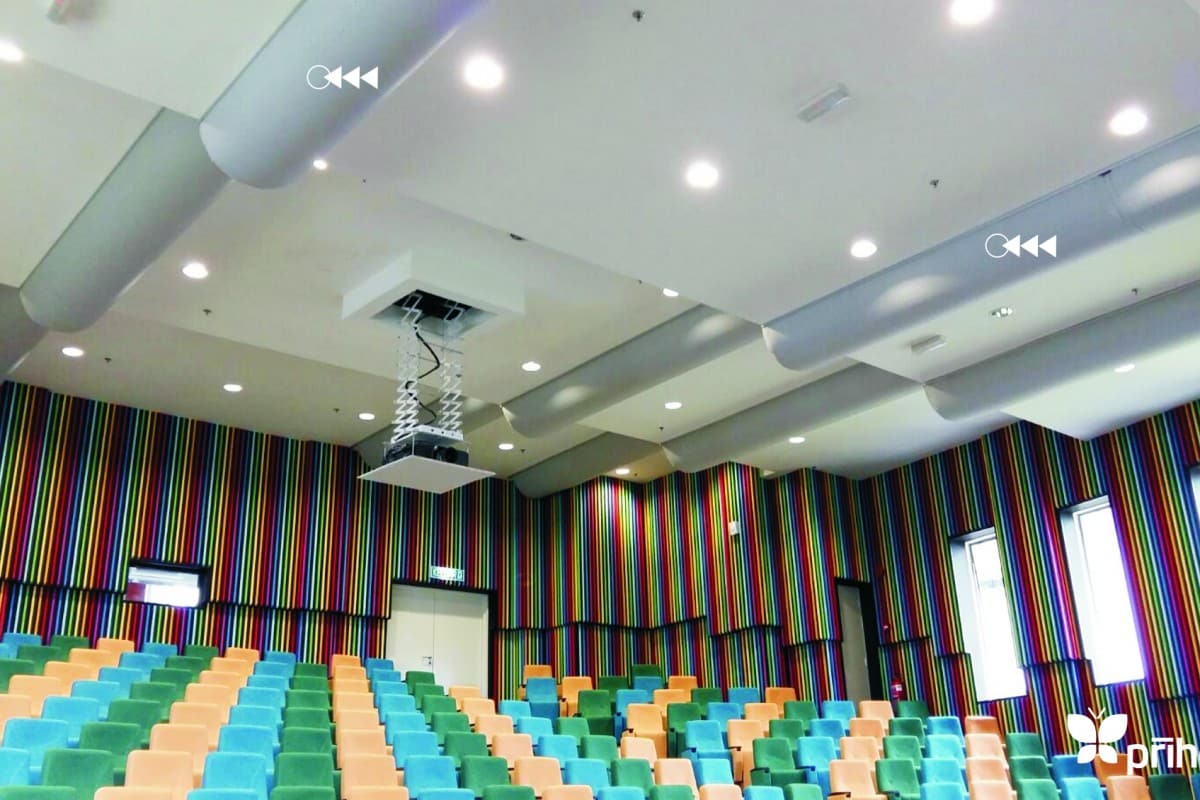The Science Behind Fabric Sock Airflow


There are many differences between rigid ducts and fabric ducts (also known as fabric socks or air socks). Whilst the change from rigid to a textile material may seem small, it has an outsize effect on how the duct or diffuser operates. One of the main differences is that a fabric sock needs to be inflated by the incoming air before it can deliver the air into the targeted area. This changes the fundamental operation of the duct and hence also how it is designed.
Fabric air sock pressure
As the supply air rushes into the fabric sock, it always follows the path of least resistance. In a well-designed duct, the air will first inflate the duct before discharging through the diffusers, whether they are perforations or fabric nozzles. The size of the duct must be selected based on the air volume and the available static pressure from the fan to ensure that the duct remains adequately inflated. Both incorrect duct sizing and insufficient air pressure negatively impact the diffuser’s performance.
Some applications can have variable air volumes. In these cases, if aesthetics are important, we would recommend opting for internal rings to help maintain the design shape of the duct.
Fabric diffuser selection
The air diffusion section of a fabric sock is a little different than most traditional air ventilation options. Traditional systems bring the air into the room through a main rigid duct and then use separate diffusers dotted around the room to blow the air into the occupied zone. By contrast, fabric ducts do the air transport and the diffusion tasks simultaneously. Depending on the type of application they are set up for, they might distribute the air through fabric nozzles that are sonic-welded or sewn onto the duct, or they might diffuse it gently through microperforations lasered onto part or the full surface of the duct. The main difference is that with fabric ducts, the entire surface can be used to supply the air into the room.
The ability to set the diffusers anywhere on the duct surface makes it much easier to predict and achieve a wide range of air distribution patterns to address the requirements of each project. Whether the application involves heating or cooling, keeping an even temperature, providing air movement or simply allowing for makeup air, the diffusers on the fabric socks can be calculated to supply the right air pattern to achieve the desired result, including keeping noise levels down and preventing unwanted draughts.
Installation
Installing fabric socks is generally quicker than traditional ducting thanks to the textile material of which it is made. Once the supports are in place, the fabric duct sections can be slid into place and zipped together to make up the full fabric sock. There is a range of mount types available, including aluminium or steel versions, direct attachments or suspension by threaded bars or wire. The best option depends on the type of structure the fabric sock will be attached to or the applications overall requirements, e.g., temporary applications generally use a wire suspension.
When to use fabric socks?
Fabric socks can be used in most commercial or industrial supply air applications. For example, it is very common for food factories to use air socks, as they are an easy way to supply the very large air volumes of cooled air that are typically required in such facilities. Similarly, many swimming pools, sports centres and fitness facilities can benefit from the aesthetic advantages of fabric socks whilst addressing their ventilation needs.
However, fabric socks aren’t designed to take the place of every type of ducting. They are best thought of as diffusers in that, while they can convey air from one room to another, their main purpose is to distribute the air.
Looking for more information?
Our experts are on hand to answer any questions. Why not give us a call or drop us a message, We’ll work with you to find the right solution.
Contact us

